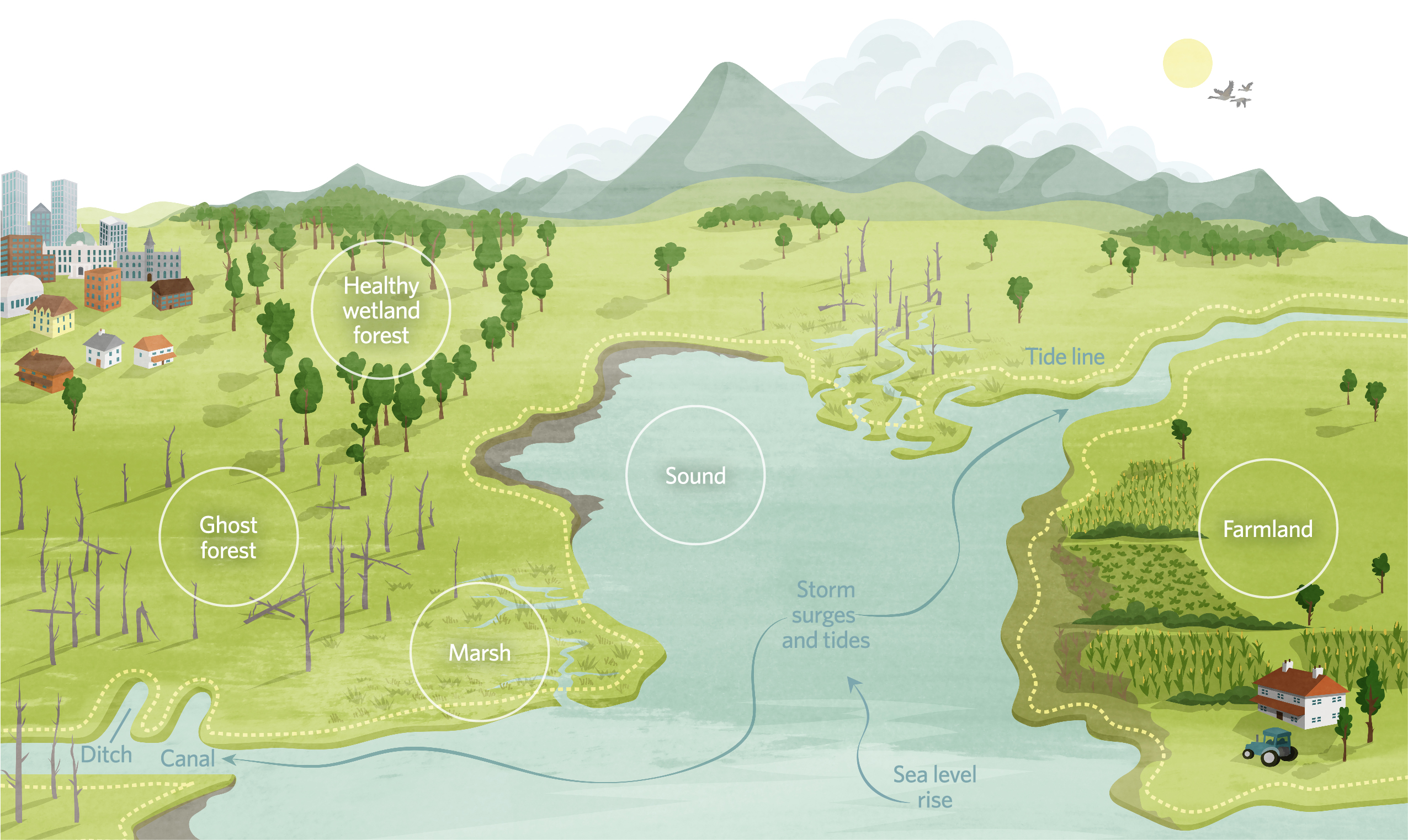
As sea levels rise, the seeds of wetland forest trees are carried farther inland, where the species infiltrate the deciduous and pine forests found there. The effect is a migration of the wetland forest away from salty water.
Increasingly stronger storms create more-forceful storm surges that push saltwater farther inland, damaging plants and trees. Saltwater reaches especially far inland in areas where people have built canals and ditches to drain the soil so they can live or farm there; the water flows backwards up these channels to the very lands they’re intended to drain. Drought conditions exacerbate the situation and hasten forest death.
As seas rise and storms intensify due to climate change, storm surges and high tides wash over the land along the sound, turning more and more of it into salt-tolerant marsh. As sea levels continue to rise, these marshes will eventually become open water.
Here, saltwater can come into contact with marsh and wetland forest, especially as sea levels rise, pushing salty water farther inland.
Rising seas push storm surges and high tides farther inland, where salty water starts to affect low-lying farms along the Atlantic coast. In the past, farmers added tide gates to prevent salt water from inundating inland areas, but as sea levels rise and storm surges increase in frequency and magnitude, saltwater can make its way around these gates and get trapped behind them. Drought conditions can dry out soils, further concentrating the salt that kills crops. Farmers have responded by planting more salt-tolerant crops or by abandoning some fields altogether.